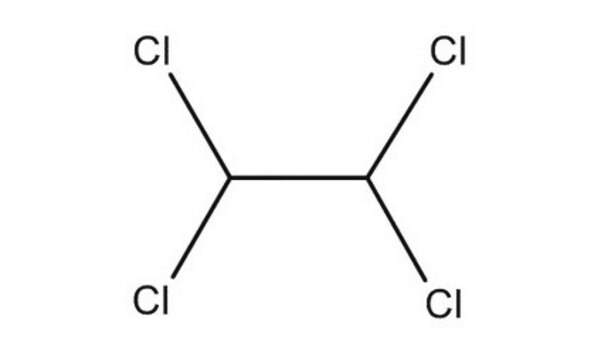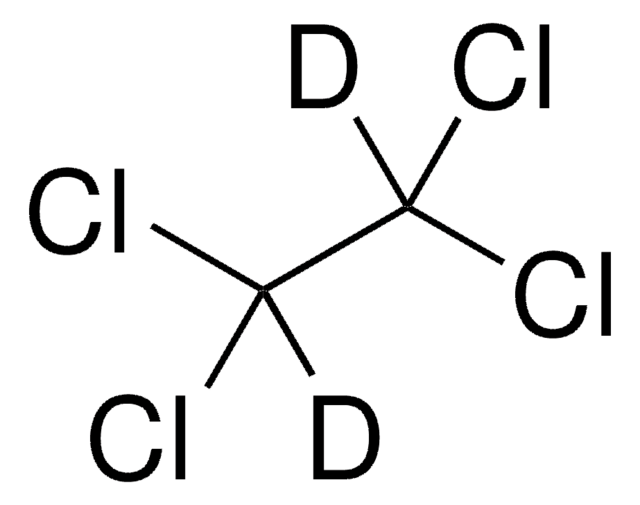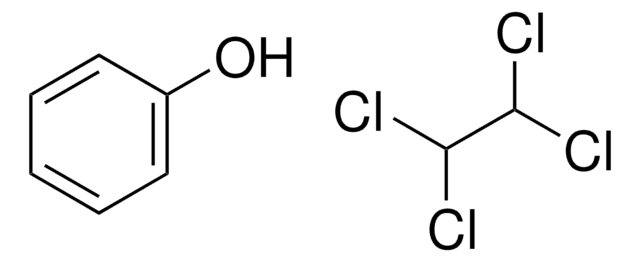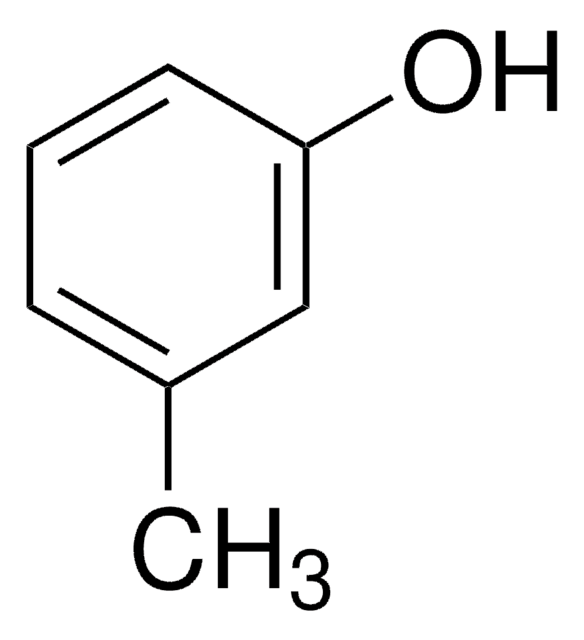Kluczowe dokumenty
46259
1,1,2,2-Tetrachloroethane
analytical standard
Synonim(y):
Acetylene tetrachloride
About This Item
Polecane produkty
klasa czystości
analytical standard
Poziom jakości
gęstość pary
5.8 (vs air)
ciśnienie pary
8 mmHg ( 20 °C)
okres trwałości
limited shelf life, expiry date on the label
metody
HPLC: suitable
gas chromatography (GC): suitable
współczynnik refrakcji
n20/D 1.494 (lit.)
bp
147 °C (lit.)
mp
−43 °C (lit.)
gęstość
1.586 g/mL at 25 °C (lit.)
Zastosowanie
environmental
Format
neat
temp. przechowywania
2-8°C
ciąg SMILES
ClC(Cl)C(Cl)Cl
InChI
1S/C2H2Cl4/c3-1(4)2(5)6/h1-2H
Klucz InChI
QPFMBZIOSGYJDE-UHFFFAOYSA-N
Szukasz podobnych produktów? Odwiedź Przewodnik dotyczący porównywania produktów
Zastosowanie
Hasło ostrzegawcze
Danger
Zwroty wskazujące rodzaj zagrożenia
Zwroty wskazujące środki ostrożności
Klasyfikacja zagrożeń
Acute Tox. 1 Dermal - Acute Tox. 2 Inhalation - Aquatic Chronic 2
Kod klasy składowania
6.1A - Combustible acute toxic Cat. 1 and 2 / very toxic hazardous materials
Klasa zagrożenia wodnego (WGK)
WGK 3
Temperatura zapłonu (°F)
Not applicable
Temperatura zapłonu (°C)
Not applicable
Środki ochrony indywidualnej
Eyeshields, Faceshields, Gloves, type ABEK (EN14387) respirator filter
Wybierz jedną z najnowszych wersji:
Masz już ten produkt?
Dokumenty związane z niedawno zakupionymi produktami zostały zamieszczone w Bibliotece dokumentów.
Protokoły
US EPA Method TO-17: GC Analysis of Volatiles on VOCOL® after Collection/Desorption using Air Toxics Tube
US EPA Method 8260: GC Analysis of Volatiles on SPB®-624 after Purge & Trap using "K" Trap, Fast GC Analysis
Nasz zespół naukowców ma doświadczenie we wszystkich obszarach badań, w tym w naukach przyrodniczych, materiałoznawstwie, syntezie chemicznej, chromatografii, analityce i wielu innych dziedzinach.
Skontaktuj się z zespołem ds. pomocy technicznej










